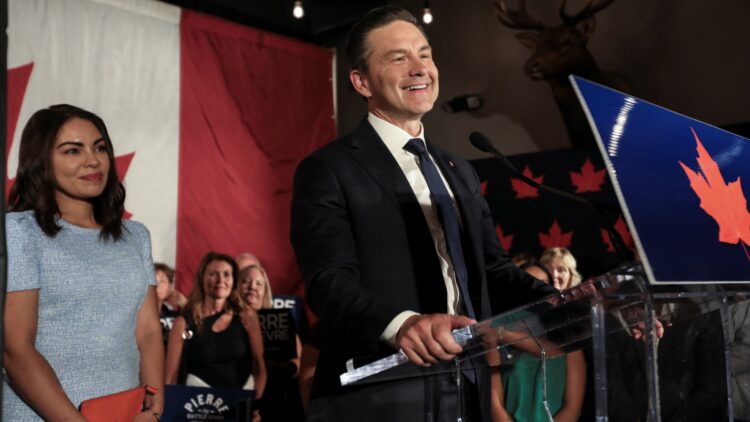Pierre Poilievre’s return to Alberta after his victory marks a new chapter in his political dispute with Premier Mark Carney. After a few months of absence from the House, the Conservative leader now needs to regain strategic ground if he wants to strengthen his opposition amid trade tensions and economic uncertainty in Canada.
Poilievre’s return and the challenge to Carney
The leader of Canada’s official opposition Conservatives, Pierre Poilievre, secured a return to Parliament and a chance to grill Prime Minister Mark Carney, staging a comeback after unexpectedly losing his seat in an April election. Poilievre won 80.4% of the vote in a special election on Monday in the parliamentary constituency of Battle River-Crowfoot in the province of Alberta, a Conservative stronghold.
The sitting legislator stepped down to allow Poilievre to run in his seat, thereby allowing him to return to the House of Commons. Poilievre, who accuses the Liberal government of botching its handling of U.S. relations and running up out-of-control deficits, will be able to confront Carney when the House of Commons returns on September 15.
Carney, who took over as prime minister in March, secured a strong minority government in April’s federal election on a promise to stand up to U.S. President Donald Trump. He has since moderated his approach even as Washington imposed more tariffs. “The deficit is spiraling out of control, inflation is up, elbows are down,” Poilievre told a victory rally. Carney offered his congratulations in a post on X.
Carney faces renewed opposition
Carney is in no immediate danger politically. Although the Liberals have a minority, they should be able to rely on the support of smaller parties to survive confidence votes. A Nanos Research poll earlier this month put the Liberals at 44% popular support compared with 33% for the Conservatives. Carney has pulled the Liberals more to the center and Poilievre will find it harder to draw a sharp contrast, said pollster Nik Nanos, CEO of Nanos Research.
“Poilievre needs to articulate what he learned from the last federal election and how his government would be different than a Carney government,” he said via email. At the start of the year the Conservatives looked set for a crushing election victory over the Liberals of then-Prime Minister Justin Trudeau, who were far behind in polls after more than nine years in power. But Liberal fortunes soared after Trudeau announced he was stepping down and Trump began threatening Canada with tariffs and annexation.
Trade tensions with the US
The US and its tariffs are putting pressure on the Carney administration, which is trying to balance diplomacy with economic issues. This current situation provides Poilievre with political leverage to criticize the administration’s current costs and thus advocate for a tougher stance in negotiations with the United States. Conflicts surrounding international trade could be central to the dispute between the government and the opposition in the coming months.
What is Poilievre’s strategic role in the opposition?
Poilievre, in the House of Commons, has gained the opportunity to reposition the Conservative Party, all this in the face of a government seeking to consolidate its legitimacy. Beyond criticizing the deficit and inflation, he needs to demonstrate a viable alternative to deal with domestic challenges, as well as external pressures from the United States. This performance could reshape the political balance until the next election.
Canada is experiencing its greatest polarization with Poilievre’s return to Parliament, amid a challenging economic environment and the impact of their decisions. Carney is betting on parliamentary moderation to ensure stability. The confrontation between the two leaders could change the course of Canadian politics and how the country will face external pressures in the coming years.
GCN.com/Reuters


